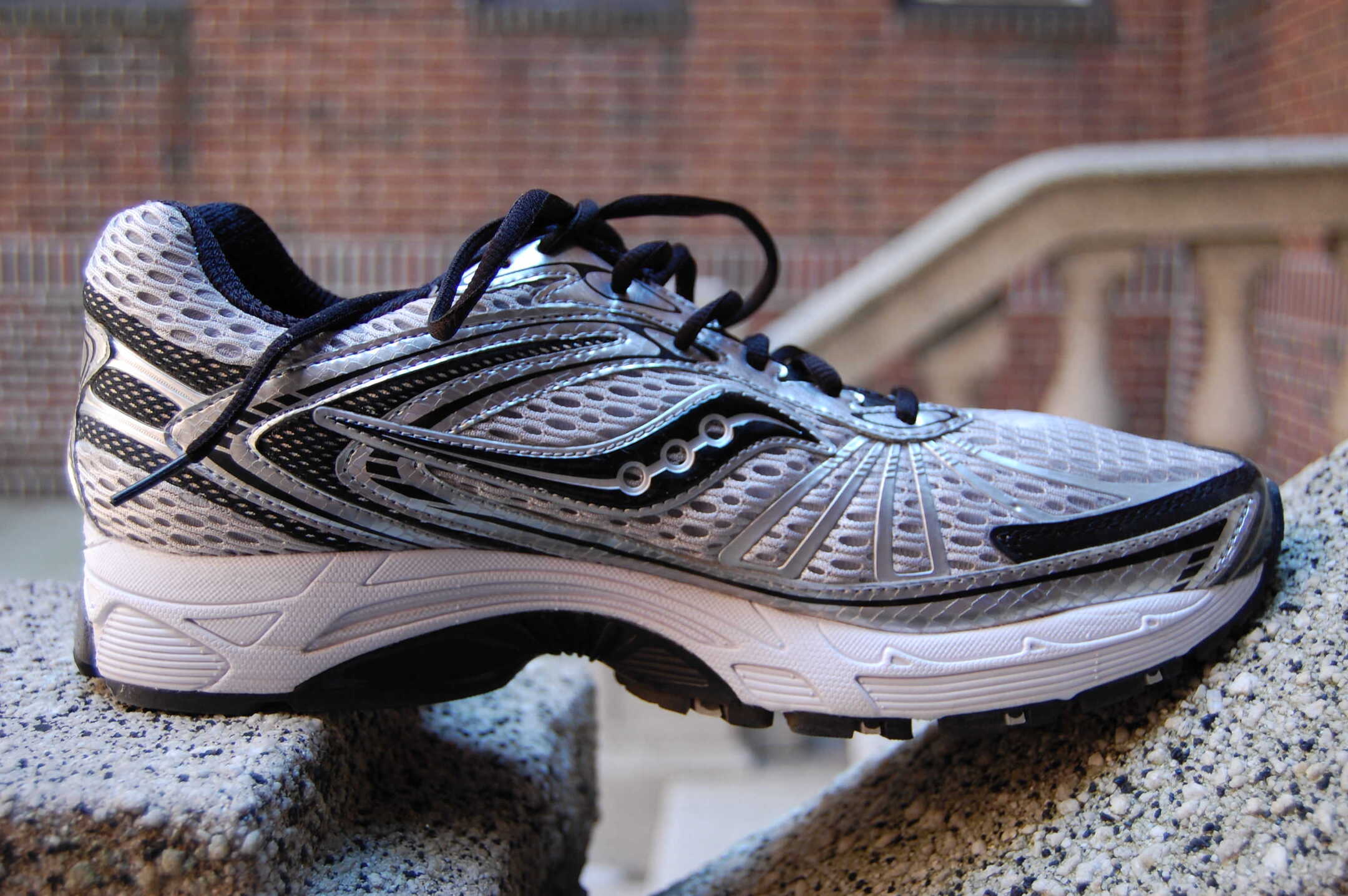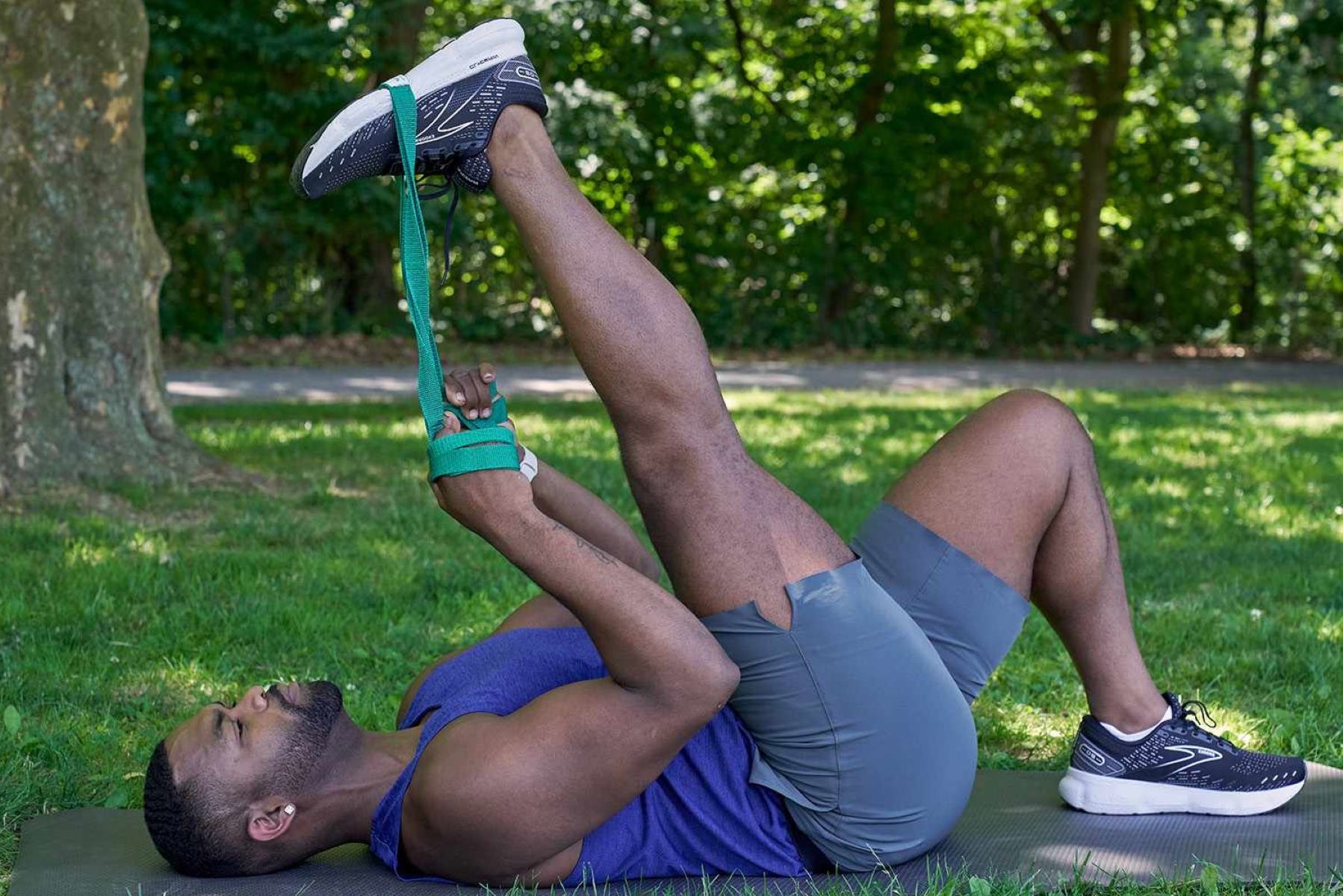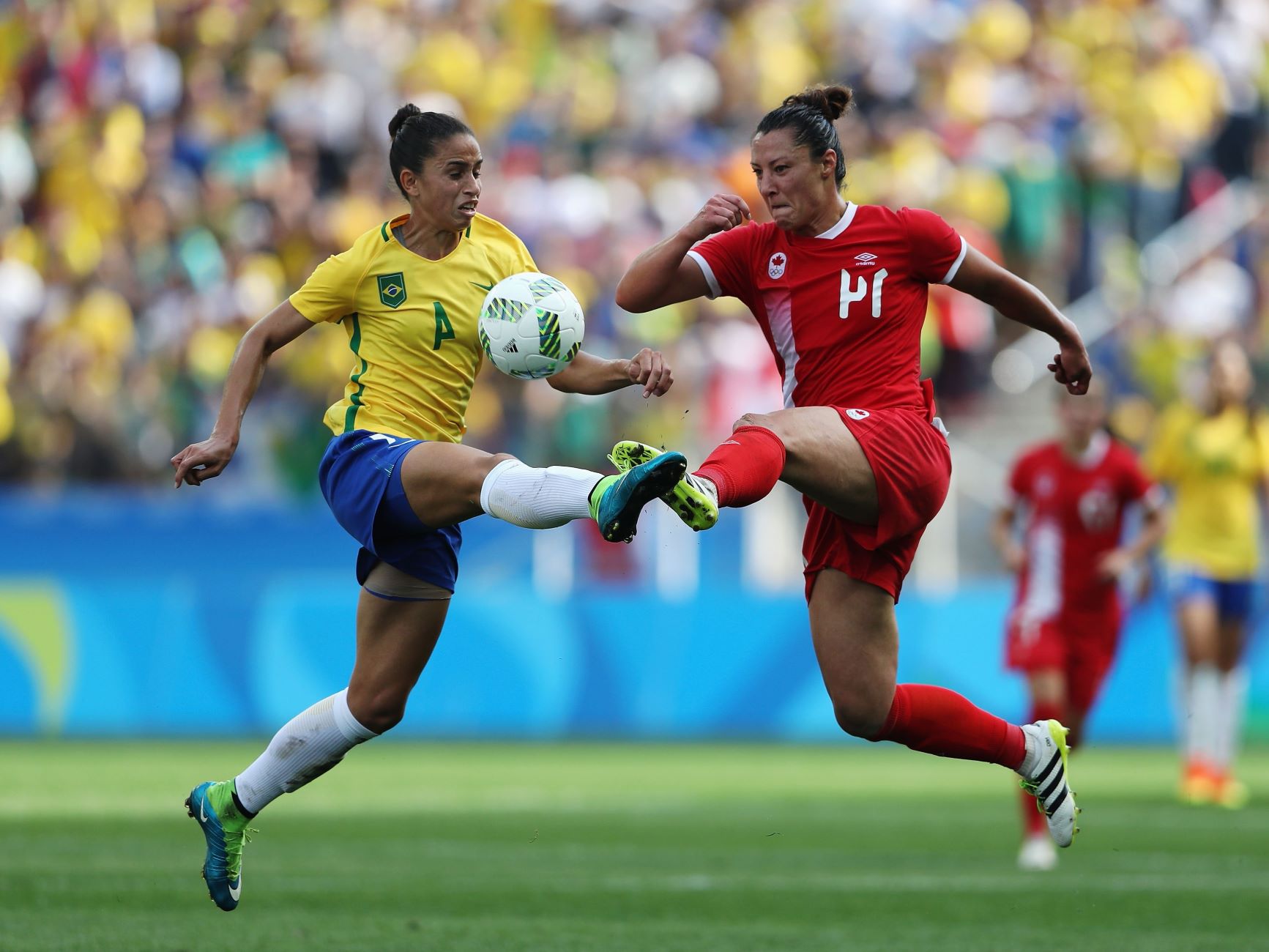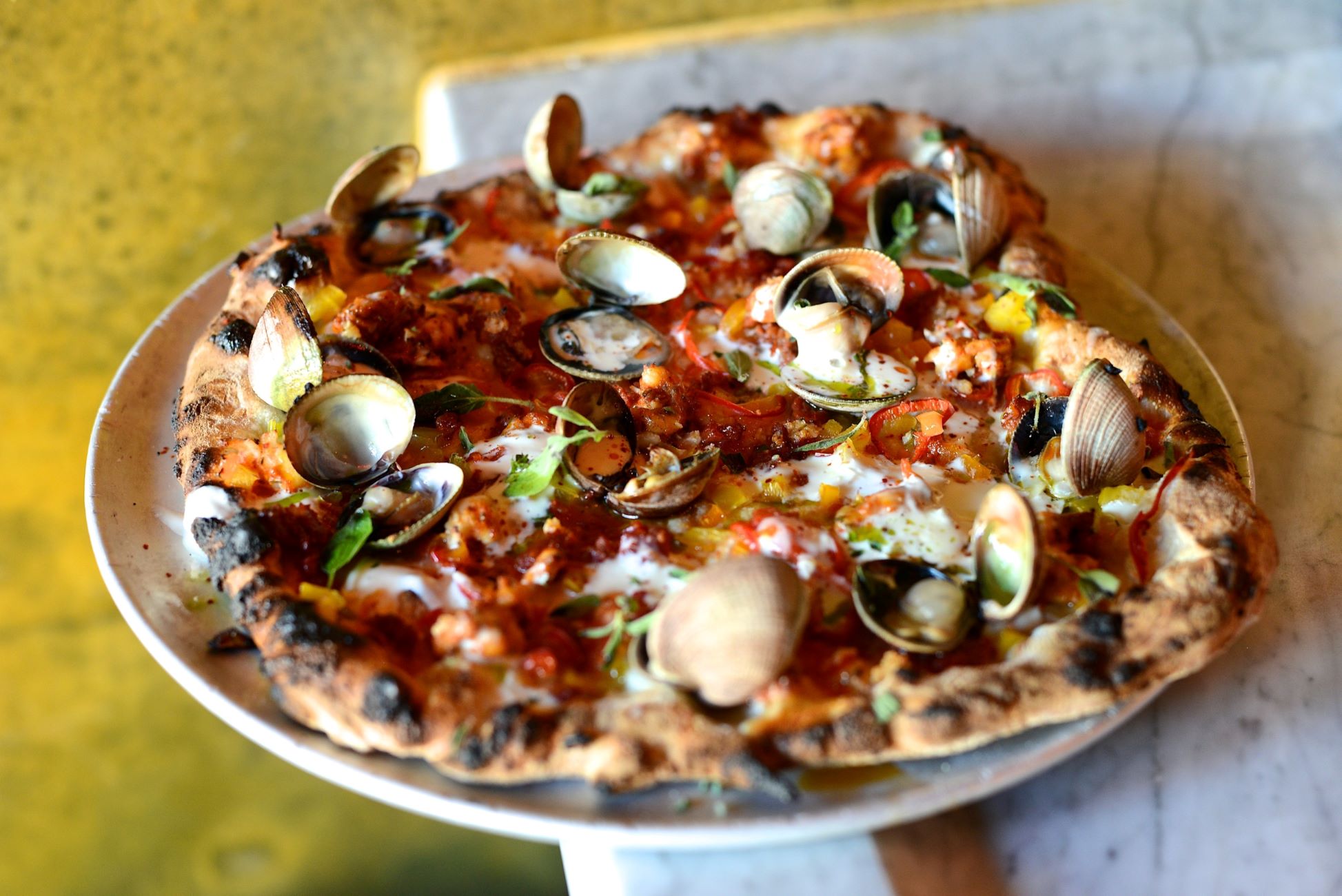Home>Health & Nutrition>Injury Prevention>The Ultimate Guide To Sports Massage For Runners
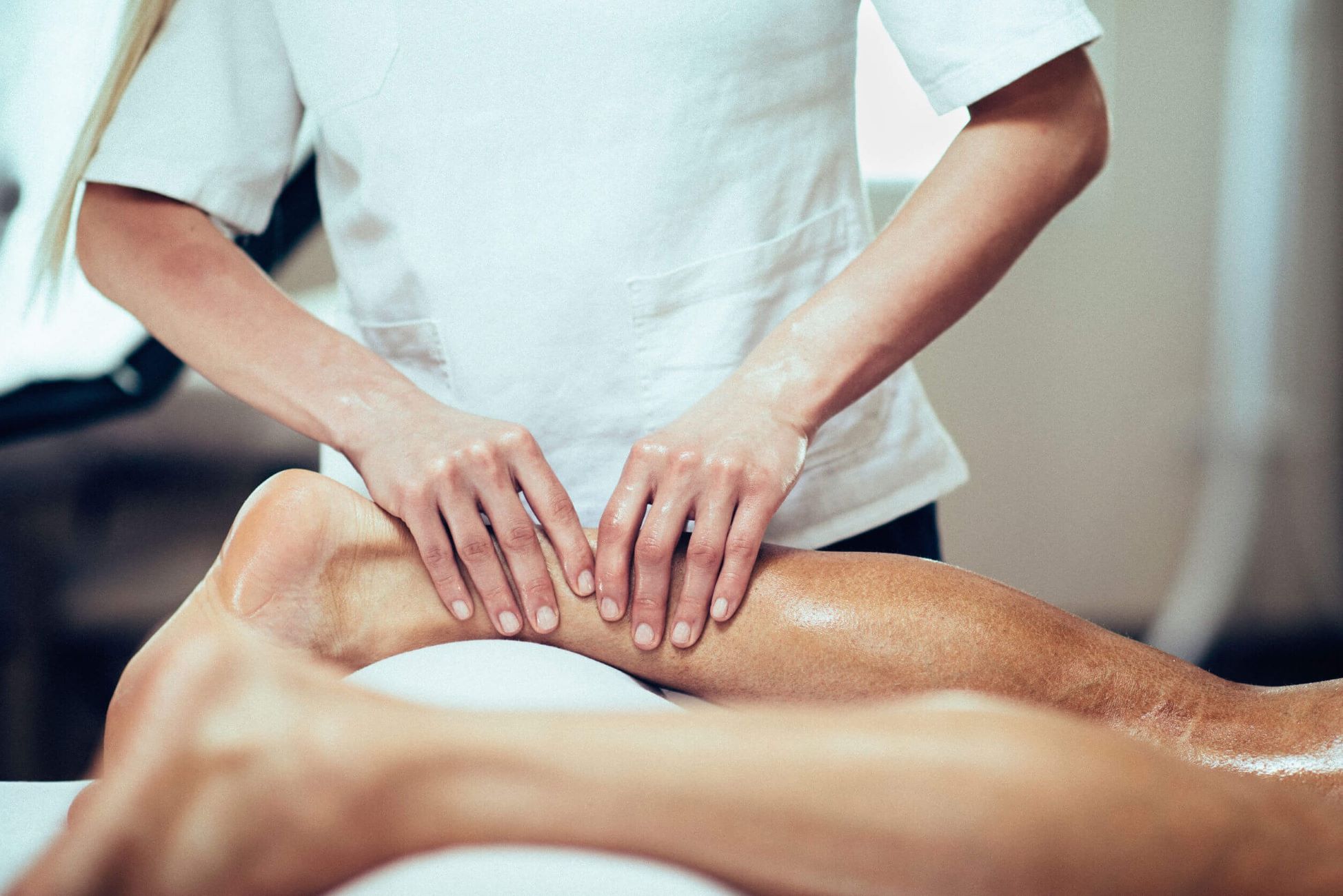

Injury Prevention
The Ultimate Guide To Sports Massage For Runners
Published: February 23, 2024
Discover how sports massage can help runners prevent injuries and improve performance with our comprehensive guide. Unlock the benefits of injury prevention today!
(Many of the links in this article redirect to a specific reviewed product. Your purchase of these products through affiliate links helps to generate commission for Therunningadvisor.com, at no extra cost. Learn more)
Table of Contents
Introduction
As a dedicated runner, you understand the exhilarating rush of endorphins that comes with each stride. Whether you're training for a marathon, enjoying a leisurely jog, or sprinting towards your personal best, running is a powerful way to stay fit and clear your mind. However, the repetitive nature of this high-impact activity can take a toll on your body, leading to muscle tightness, fatigue, and the risk of injury.
In the pursuit of peak performance and injury prevention, many runners turn to sports massage as an integral part of their training regimen. Sports massage is a specialized form of therapy designed to address the unique needs of athletes, including runners, by targeting specific muscle groups, improving flexibility, and promoting faster recovery.
In this comprehensive guide, we will delve into the world of sports massage for runners, exploring its myriad benefits, effective techniques, and the crucial role it plays in injury prevention and overall performance enhancement. Whether you're a seasoned marathoner or a novice runner, understanding the principles of sports massage and its application can significantly impact your running journey.
Throughout this guide, you will gain valuable insights into the art and science of sports massage, empowering you to make informed decisions about integrating this practice into your training routine. From the intricacies of pre-run and post-run massage to the nuances of finding a qualified sports massage therapist, we will equip you with the knowledge and tools to optimize your running experience.
So, lace up your running shoes, and let's embark on a transformative exploration of sports massage for runners. Whether you're aiming to conquer new distances, improve your speed, or simply savor the joy of running, the wisdom within these pages will serve as your trusted companion on the exhilarating path to peak performance and injury-free running.
Benefits of Sports Massage for Runners
Enhanced Muscle Recovery
After a rigorous run, your muscles undergo stress and fatigue, often leading to tightness and soreness. Sports massage plays a pivotal role in accelerating muscle recovery by increasing blood flow to the targeted areas, facilitating the removal of metabolic waste products, and promoting the delivery of essential nutrients and oxygen to the muscles. This enhanced circulation aids in reducing muscle soreness and stiffness, allowing you to bounce back quicker and resume your training with renewed vigor.
Injury Prevention and Rehabilitation
Runners are susceptible to a myriad of injuries, ranging from shin splints and IT band syndrome to plantar fasciitis and Achilles tendonitis. Sports massage serves as a proactive measure in injury prevention by addressing muscle imbalances, releasing adhesions, and improving tissue flexibility. Moreover, for runners dealing with existing injuries, targeted sports massage techniques can aid in the rehabilitation process, promoting optimal healing and restoring functional movement patterns.
Improved Flexibility and Range of Motion
Flexibility is a cornerstone of efficient running mechanics. Sports massage techniques, such as myofascial release and deep tissue massage, work to alleviate muscle tightness and adhesions, thereby enhancing flexibility and range of motion. By loosening tight muscles and breaking down scar tissue, sports massage enables runners to achieve a more fluid and unrestricted stride, reducing the risk of overuse injuries and enhancing overall performance.
Read more: The Ultimate Guide To Fell Running
Alleviation of Muscle Tension and Fatigue
The repetitive nature of running can lead to the accumulation of muscle tension and fatigue, hindering optimal performance. Sports massage targets specific muscle groups, releasing tension and promoting relaxation. This not only alleviates muscular fatigue but also fosters a sense of overall well-being, allowing runners to approach their training with a rejuvenated body and mind.
Psychological Benefits
In addition to its physical advantages, sports massage offers psychological benefits for runners. The therapeutic touch and rhythmic movements of massage can alleviate stress, anxiety, and mental fatigue, fostering a positive mindset essential for peak performance. By creating a calming and nurturing environment, sports massage complements the mental fortitude required for tackling challenging runs and achieving personal milestones.
Enhanced Circulation and Waste Removal
Efficient circulation is vital for optimal muscle function and recovery. Sports massage stimulates blood flow, facilitating the removal of metabolic waste products such as lactic acid, which can contribute to muscle soreness and fatigue. By enhancing circulation, sports massage supports the body's natural detoxification process, promoting faster recovery and reducing the risk of post-run discomfort.
Incorporating sports massage into your running regimen can yield a multitude of benefits, ranging from accelerated recovery and injury prevention to enhanced flexibility and psychological well-being. By harnessing the power of sports massage, runners can optimize their performance, mitigate the risk of injuries, and embark on a transformative journey towards peak running prowess.
Common Injuries and Ailments in Runners
Running, a high-impact activity, places significant demands on the musculoskeletal system, making runners susceptible to a range of injuries and ailments. Understanding these common issues is crucial for proactive injury prevention and effective management. Here are some prevalent injuries and ailments that runners often encounter:
Shin Splints
Shin splints, or medial tibial stress syndrome, manifest as pain along the inner edge of the shinbone. This condition is often attributed to overuse, improper footwear, or running on hard surfaces. Sports massage can aid in alleviating the associated muscle tightness and inflammation, promoting faster recovery and reducing the risk of recurrence.
IT Band Syndrome
Iliotibial (IT) band syndrome involves pain on the outside of the knee, stemming from inflammation of the IT band. Runners may experience this condition due to repetitive knee flexion during running. Sports massage techniques targeting the IT band and surrounding muscles can help alleviate tightness and restore optimal function, contributing to effective IT band syndrome management.
Plantar Fasciitis
Characterized by heel pain, plantar fasciitis is a common ailment among runners, often stemming from overpronation or inadequate foot support. Sports massage focused on the calves, feet, and lower limbs can aid in reducing tension, improving circulation, and promoting tissue healing, offering relief to runners grappling with plantar fasciitis discomfort.
Achilles Tendonitis
Achilles tendonitis involves inflammation of the Achilles tendon, leading to pain and stiffness in the back of the ankle. Runners may be predisposed to this condition due to overtraining, improper footwear, or biomechanical issues. Sports massage techniques targeting the calf muscles and Achilles tendon can aid in reducing tension, promoting tissue healing, and restoring optimal function, thereby supporting the rehabilitation process for runners dealing with Achilles tendonitis.
Muscle Strains and Sprains
Muscle strains and sprains are prevalent in runners, often arising from sudden movements, overexertion, or inadequate warm-up. Sports massage can play a pivotal role in promoting muscle relaxation, reducing inflammation, and enhancing tissue healing, facilitating the recovery process for runners grappling with these common soft tissue injuries.
By gaining insight into these common injuries and ailments, runners can proactively incorporate sports massage into their training regimen to mitigate the risk of these issues and effectively manage them if they arise. Through targeted massage techniques and proactive injury prevention strategies, runners can optimize their running experience and pursue their passion with confidence and resilience.
Techniques and Methods of Sports Massage
Sports massage encompasses a diverse array of techniques and methods tailored to address the unique needs of athletes, including runners. By leveraging a combination of specialized modalities, sports massage therapists aim to optimize muscle function, enhance recovery, and prevent injuries. Let's explore some of the key techniques and methods commonly employed in sports massage for runners:
Swedish Massage
Swedish massage forms the foundation of sports massage, incorporating long, flowing strokes, kneading, and circular movements to promote relaxation and improve circulation. This gentle yet effective technique serves as an ideal prelude to more targeted sports massage methods, preparing the muscles for deeper manipulation and promoting overall relaxation and stress reduction.
Deep Tissue Massage
Deep tissue massage targets the deeper layers of muscle and connective tissue, aiming to release chronic muscle tension and adhesions. For runners, this technique can address specific areas of tightness and discomfort, promoting improved flexibility, range of motion, and enhanced muscle recovery. By applying sustained pressure and slow strokes, deep tissue massage can effectively alleviate muscle tension and facilitate tissue healing.
Read more: The Benefits Of Self-Massage For Runners
Myofascial Release
Myofascial release focuses on the fascial network, a complex web of connective tissue that surrounds and supports muscles. Through gentle, sustained pressure and stretching, myofascial release aims to alleviate restrictions within the fascia, promoting enhanced muscle function, improved flexibility, and reduced risk of overuse injuries. This technique is particularly beneficial for runners seeking to address tightness and restrictions in specific muscle groups.
Trigger Point Therapy
Trigger points, or localized areas of muscle tightness and tenderness, can hinder optimal muscle function and contribute to pain and discomfort. Trigger point therapy involves applying direct pressure to these points, releasing tension and promoting muscle relaxation. By addressing trigger points, sports massage therapists can alleviate muscular discomfort and enhance overall muscle function, supporting runners in their quest for peak performance and injury prevention.
Cross-Fiber Friction
Cross-fiber friction involves applying transverse pressure to the muscle fibers, aiming to break down adhesions and scar tissue. This technique can enhance tissue flexibility, improve circulation, and promote optimal healing of soft tissue injuries. For runners dealing with muscle strains or overuse injuries, cross-fiber friction can play a crucial role in facilitating the rehabilitation process and restoring functional movement patterns.
Stretching and Range of Motion Techniques
Incorporating stretching and range of motion techniques within sports massage sessions can further enhance muscle flexibility and joint mobility. By guiding runners through targeted stretches and movement patterns, sports massage therapists can help optimize muscle function, reduce the risk of injuries, and promote overall musculoskeletal health.
By integrating these diverse techniques and methods, sports massage therapists can tailor their approach to address the specific needs and goals of runners. Whether it's alleviating muscle tension, enhancing flexibility, or supporting injury rehabilitation, the art and science of sports massage offer a multifaceted toolkit for optimizing the running experience and nurturing the body towards peak performance.
Pre-Run and Post-Run Massage
Pre-run and post-run massages are integral components of a runner's training regimen, playing a crucial role in optimizing performance, reducing the risk of injuries, and promoting overall well-being. These targeted massage sessions are strategically timed to prepare the body for the physical demands of running and facilitate efficient recovery post-exercise.
Pre-Run Massage
A pre-run massage serves as a proactive measure to prepare the muscles, tendons, and ligaments for the upcoming physical exertion. This focused session aims to enhance muscle elasticity, promote circulation, and mentally prepare the runner for the impending activity. Key objectives of a pre-run massage include:
-
Muscle Activation: Through targeted techniques such as effleurage and petrissage, a pre-run massage can stimulate the muscles, promoting increased blood flow and enhancing muscle responsiveness. This can help reduce the risk of muscle strain and improve overall muscle function during the run.
-
Flexibility Enhancement: By incorporating stretching and myofascial release techniques, a pre-run massage can alleviate muscle tightness and improve range of motion, allowing the runner to achieve a more fluid and efficient stride from the onset of the run.
-
Mental Preparation: The calming and centering effects of massage can help runners enter a focused and positive mindset, priming them for the physical and mental challenges of their run.
Post-Run Massage
Following a demanding run, the body undergoes significant stress and fatigue, making post-run massage a valuable tool for promoting recovery and reducing muscle soreness. This targeted session aims to facilitate muscle relaxation, enhance circulation, and support the body's natural healing processes. Key objectives of a post-run massage include:
-
Muscle Recovery: Post-run massage techniques such as effleurage and gentle stretching can aid in reducing muscle tension and promoting relaxation, facilitating the recovery process and minimizing post-run discomfort.
-
Injury Prevention: By addressing areas of muscle tightness and fatigue, a post-run massage can help mitigate the risk of overuse injuries and promote optimal muscle recovery, setting the stage for future training sessions.
-
Metabolic Waste Removal: The rhythmic movements of massage can enhance circulation, aiding in the removal of metabolic waste products such as lactic acid, which can contribute to muscle soreness and fatigue post-run.
By incorporating pre-run and post-run massages into their training routine, runners can optimize their physical readiness, enhance recovery, and foster a holistic approach to their running experience. These targeted sessions, when integrated strategically, can serve as invaluable tools in the pursuit of peak performance and injury-free running.
Finding a Qualified Sports Massage Therapist
When seeking a qualified sports massage therapist to support your running journey, it is essential to prioritize expertise, experience, and a deep understanding of the unique needs of athletes. Here are key considerations to guide you in finding the ideal sports massage therapist:
Credentials and Certification
Look for a sports massage therapist who holds relevant credentials and certifications from reputable institutions. A certified sports massage therapist has undergone specialized training in addressing the needs of athletes, including runners, and possesses a comprehensive understanding of sports-related injuries, muscle imbalances, and effective massage techniques tailored to athletic performance.
Experience and Specialization
Seek a sports massage therapist with a proven track record of working with runners and athletes. Experience in addressing running-specific issues such as IT band syndrome, plantar fasciitis, and muscle strains is invaluable. Additionally, a therapist who specializes in sports massage can offer targeted interventions to optimize muscle function, enhance recovery, and prevent injuries specific to the demands of running.
Client Testimonials and Referrals
Prioritize therapists who have a strong portfolio of client testimonials and positive referrals from runners and athletes. Hearing firsthand accounts of the therapist's impact on performance, injury prevention, and overall well-being can provide valuable insights into their effectiveness and the quality of care they provide.
Communication and Understanding
Choose a sports massage therapist who demonstrates a keen understanding of your running goals, training regimen, and any existing or potential injury concerns. Effective communication and a collaborative approach are essential for developing a tailored massage plan that aligns with your specific needs and supports your running aspirations.
Holistic Approach and Injury Prevention
Look for a therapist who adopts a holistic approach to sports massage, emphasizing injury prevention, performance enhancement, and overall well-being. A therapist who integrates injury prevention strategies, offers guidance on recovery techniques, and provides insights into optimizing muscle function can significantly contribute to your long-term running success.
Professional Network and Collaborations
Consider therapists who have affiliations with sports medicine professionals, physical therapists, or running coaches. A therapist who collaborates with other experts in the field can offer a comprehensive support network, facilitating a multidisciplinary approach to your running performance and well-being.
Personal Connection and Trust
Ultimately, the relationship between a runner and their sports massage therapist is built on trust, empathy, and a shared commitment to achieving running goals. Seek a therapist with whom you feel a strong personal connection, and who demonstrates genuine care for your well-being and success as a runner.
By prioritizing these considerations and conducting thorough research, you can find a qualified sports massage therapist who not only understands the intricacies of running but also becomes a trusted partner in your pursuit of peak performance, injury prevention, and enduring running enjoyment.
Self-Massage Techniques for Runners
Empowering runners with the knowledge and skills to perform self-massage techniques can be a game-changer in their training regimen. These techniques offer a convenient and accessible way to address muscle tightness, promote recovery, and enhance overall well-being. Here are several effective self-massage techniques tailored specifically for runners:
Foam Rolling
Foam rolling is a popular self-massage technique that targets myofascial release and muscle relaxation. By using a foam roller, runners can apply controlled pressure to specific muscle groups, such as the calves, quadriceps, and IT band. This technique aids in breaking down adhesions, alleviating muscle tightness, and promoting improved circulation. Incorporating foam rolling into a post-run routine can help reduce muscle soreness and enhance recovery.
Tennis Ball or Lacrosse Ball Massage
Using a tennis ball or lacrosse ball, runners can perform targeted self-massage on areas of muscle tension and discomfort. By applying pressure against a wall or the floor, runners can roll the ball over tight muscles, such as the glutes, hamstrings, and plantar fascia. This technique can effectively release trigger points, alleviate muscle tightness, and enhance flexibility. It offers a portable and cost-effective way to address specific areas of muscular discomfort.
Self-Massage with Massage Sticks
Massage sticks, also known as muscle roller sticks, provide runners with a versatile tool for self-massage. By rolling the massage stick over targeted muscle groups, such as the calves and shins, runners can alleviate muscle tension, improve circulation, and promote muscle relaxation. The controlled pressure exerted through the massage stick can aid in addressing tightness and discomfort, offering a convenient way to support muscle recovery.
Stretching and Self-Myofascial Release
Incorporating stretching techniques with self-myofascial release can amplify the benefits of self-massage for runners. By combining targeted stretches with the use of foam rollers or massage balls, runners can enhance muscle flexibility, alleviate tightness, and promote optimal recovery. This integrated approach supports overall muscle health and can be seamlessly integrated into a pre-run or post-run routine.
Handheld Percussion Massagers
Handheld percussion massagers offer runners a dynamic and effective self-massage tool. These devices utilize percussive therapy to deliver rapid, targeted pulses to the muscles, promoting relaxation and enhancing circulation. Runners can use handheld percussion massagers to address muscle tightness, reduce post-run discomfort, and support overall muscle recovery.
By incorporating these self-massage techniques into their training regimen, runners can take an active role in optimizing their muscle health, promoting recovery, and mitigating the risk of injuries. These accessible and versatile techniques empower runners to proactively support their running performance and overall well-being, fostering a holistic approach to their running journey.
Incorporating Sports Massage into Your Training Plan
Integrating sports massage into your training plan can be a transformative step towards optimizing your running performance and nurturing your body for enduring success. By strategically incorporating targeted massage sessions into your routine, you can harness the myriad benefits of sports massage to enhance recovery, mitigate the risk of injuries, and foster a holistic approach to your running journey.
Strategic Timing and Frequency
When incorporating sports massage into your training plan, consider the strategic timing and frequency of massage sessions. Pre-run and post-run massages can serve as pivotal components of your routine, preparing your muscles for the physical demands of running and facilitating efficient recovery post-exercise. Additionally, integrating regular sports massage sessions into your training plan, such as weekly or bi-weekly appointments, can provide ongoing support for muscle health and injury prevention.
Tailored Approach to Training Phases
Adopt a tailored approach to sports massage based on the specific phases of your training cycle. During intense training periods or leading up to race events, prioritizing more frequent and targeted sports massage sessions can aid in managing muscle fatigue, optimizing recovery, and fine-tuning muscle function. Conversely, during lower-intensity phases or recovery periods, incorporating maintenance sports massage sessions can support ongoing muscle health and readiness for future training challenges.
Read more: Gear Review: Kinomap Trainer
Collaborative Integration with Other Recovery Strategies
Incorporating sports massage into your training plan can be complemented by a holistic integration with other recovery strategies. This may include practices such as active rest, proper hydration, adequate nutrition, and targeted stretching routines. By aligning sports massage with a comprehensive approach to recovery, you can create a synergistic environment that nurtures your body, supports optimal recovery, and fosters a resilient foundation for your running endeavors.
Long-Term Performance Enhancement
View sports massage as an integral component of your long-term performance enhancement strategy. By consistently integrating sports massage into your training plan, you can proactively address muscle imbalances, promote optimal muscle recovery, and cultivate a heightened awareness of your body's needs. This proactive approach can contribute to sustained improvements in performance, reduced risk of overuse injuries, and a more gratifying running experience.
Personalized and Evolving Approach
Embrace a personalized and evolving approach to incorporating sports massage into your training plan. As your running goals, training intensity, and physical needs evolve, adapt your sports massage strategy accordingly. Communicate openly with your sports massage therapist, providing insights into your training progress, areas of concern, and upcoming running objectives. This collaborative approach can ensure that your sports massage plan remains aligned with your evolving needs and aspirations as a runner.
By weaving sports massage into the fabric of your training plan, you can elevate your running experience, foster resilience, and cultivate a profound connection with your body's capacity for enduring performance. Embrace the transformative potential of sports massage as a cornerstone of your training journey, and savor the profound impact it can have on your pursuit of peak running prowess.
Conclusion
In the exhilarating world of running, where each stride propels you towards new horizons and personal triumphs, the integration of sports massage emerges as a transformative ally in your pursuit of peak performance and enduring well-being. As the rhythmic cadence of your runs intertwines with the nurturing touch of sports massage, a harmonious synergy unfolds, fostering a holistic approach to your running journey.
Sports massage, with its multifaceted benefits, serves as a cornerstone of injury prevention, muscle recovery, and performance optimization for runners of all levels. From the soothing pre-run massage that primes your muscles for the exhilarating miles ahead to the restorative post-run session that nurtures your body's recovery, the art and science of sports massage intertwine seamlessly with the ebbs and flows of your running experience.
By delving into the intricate tapestry of sports massage techniques, from the gentle effleurage of Swedish massage to the targeted precision of trigger point therapy, runners gain access to a diverse toolkit that empowers them to address muscle tightness, enhance flexibility, and foster a resilient musculoskeletal foundation. Moreover, the integration of self-massage techniques, such as foam rolling and myofascial release, offers runners a portable and accessible means to proactively support their muscle health and recovery.
The quest for a qualified sports massage therapist becomes a journey of collaboration and trust, as runners seek a partner who not only possesses expertise and experience but also embodies a genuine commitment to their running aspirations. With a qualified therapist by your side, the artful strokes and intuitive understanding of your body's needs converge to create a nurturing sanctuary where your running goals are nurtured and your resilience is fortified.
As you weave sports massage into the fabric of your training plan, a symphony of strategic timing, tailored approaches, and collaborative integration with other recovery strategies unfolds, fostering a resilient foundation for your running endeavors. This personalized and evolving approach ensures that sports massage remains a steadfast companion, adapting to the evolving landscape of your running journey and nurturing your enduring pursuit of peak performance.
In the grand tapestry of running, where each step is a testament to your resilience and determination, sports massage emerges as a guiding force, nurturing your body, fostering resilience, and amplifying the joy of your running experience. Embrace the transformative potential of sports massage as a cherished companion on your journey, and savor the profound impact it bestows on your pursuit of enduring running prowess.

